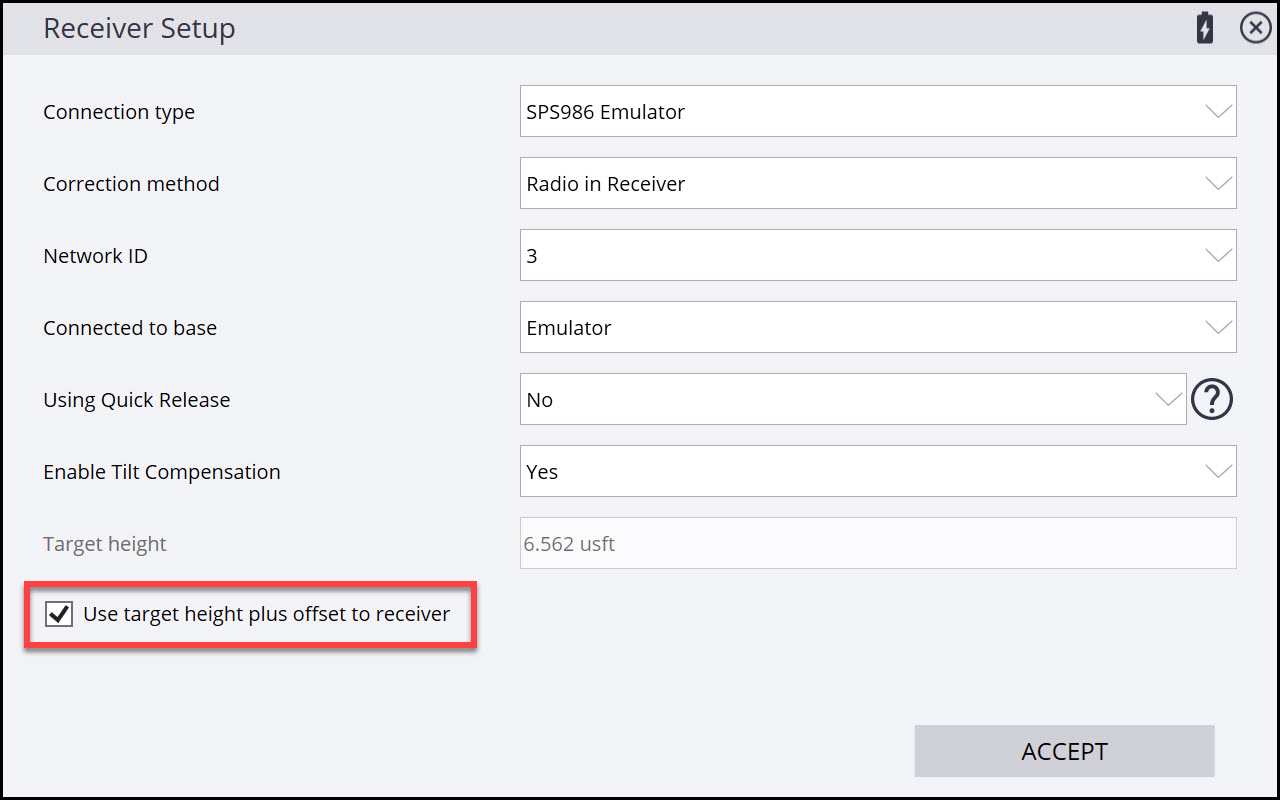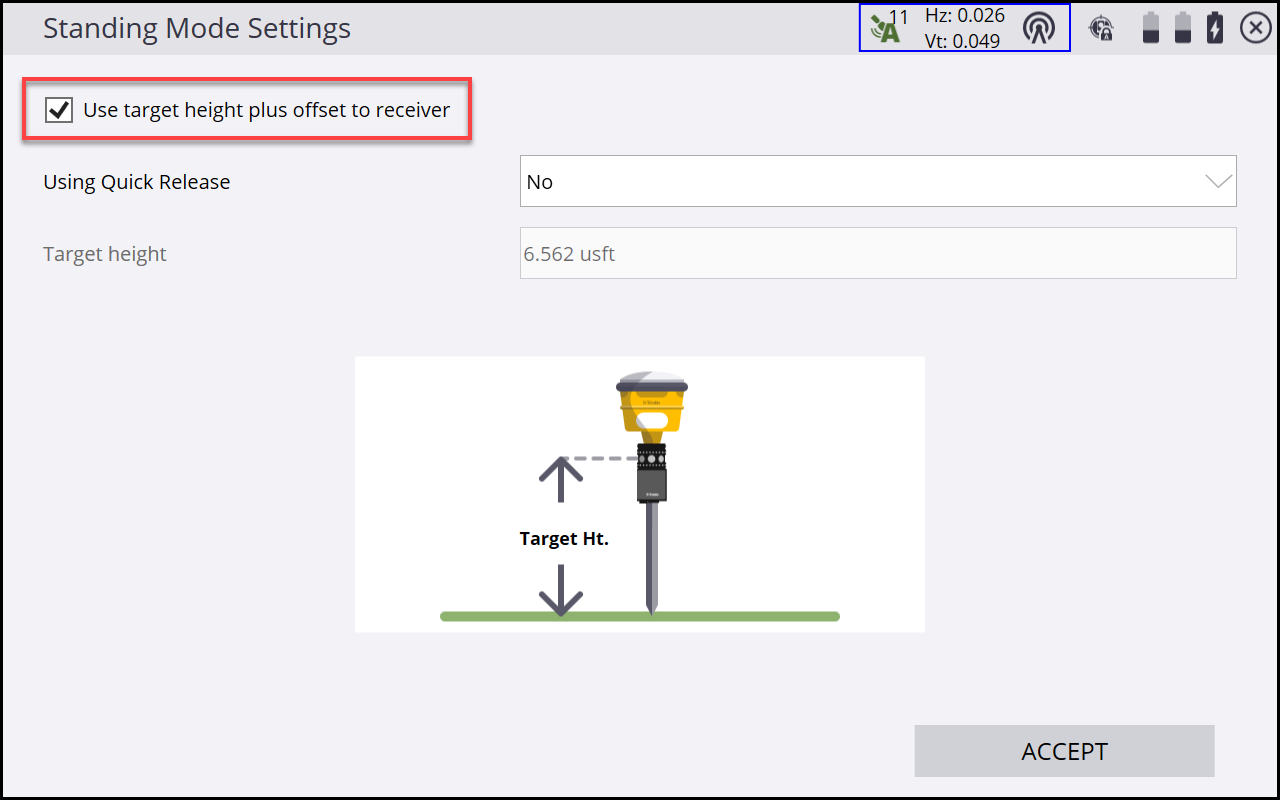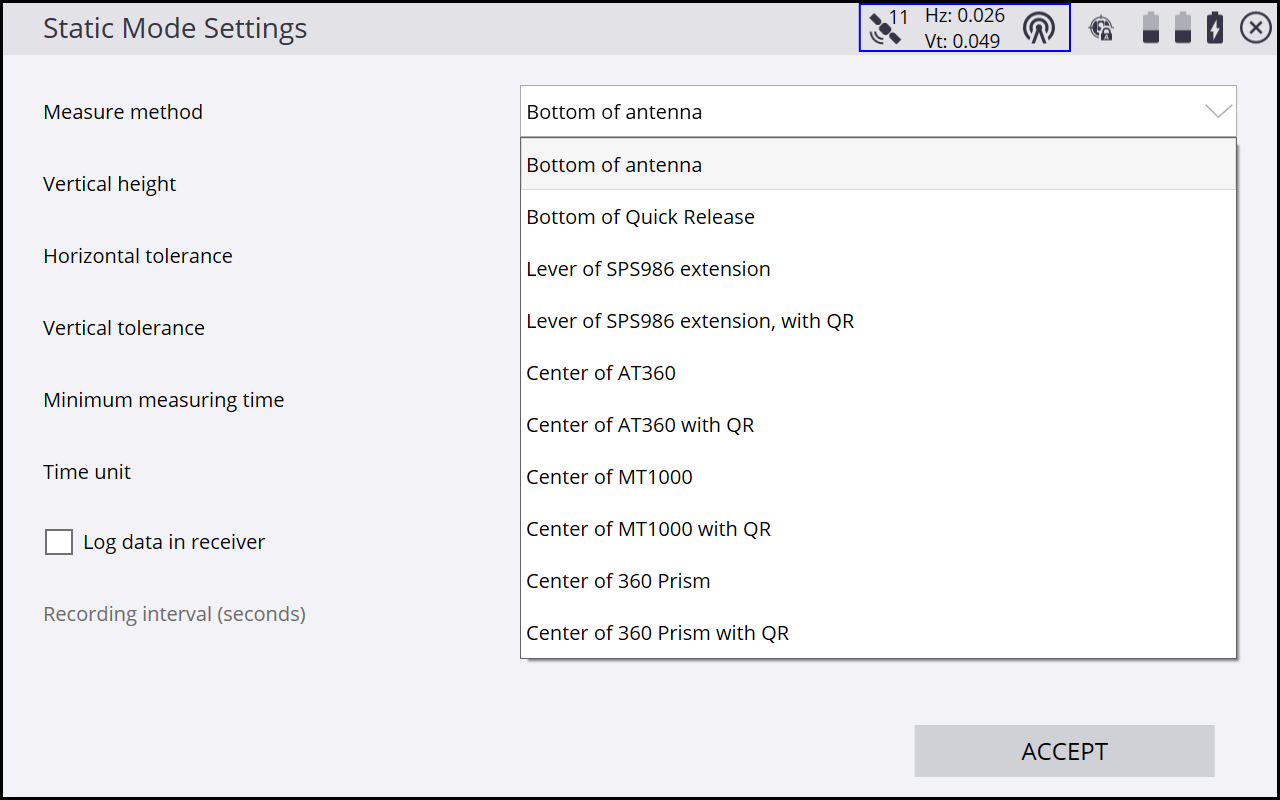GNSS antenna heights in Integrated Survey
GNSS antenna height options now has a new Use target height plus offset to receiver check box on the GNSS height settings pages for all measure modes (walking, standing, static, vehicle) and for the supported prisms that have the 5/8” threads at the top: AT360, 360 degree, and MT1000 prisms.


When this checkbox is selected, the GNSS height to the bottom of the receiver is automatically adjusted, based on the specific prism selected in the UTS settings and the entered height of the prism. Instead of Antenna height, Target height is shown. The height in the GNSS setting window will be grayed out and can only be changed in the UTS height window. The adjusted GNSS height is displayed in the Info Bar/Panel for the GNSS antenna height on the main screen.
The graphic shown in Siteworks is always the MT1000 and does not update to the prism type in use.
When performing a static measurement with GNSS, there are new options available in the Measure Method field in the Static Mode Settings screen to account for the GNSS receiver being on top of a prism. Select the appropriate configuration to get the correct GNSS height without having to measure to the bottom of the antenna. This static measure method was introduced in Siteworks version 1.71.

The following offsets are applied to the height of the GNSS as it is entered in the UTS height settings:
|
Prism type |
Offset value |
|---|---|
|
AT360 |
0.095 m |
|
360 prism |
0.034 m |
|
MT1000 |
0.034 m |
When using Integrated Survey, you can select any prism type available in Siteworks, even those that do not have threads at the top (for example, a backsight prism). If any prisms other than the ones listed in the table above are selected, then the Use target height plus offset to receiver checkbox will not be available in the GNSS height settings screens and the antenna height will have to be manually entered.